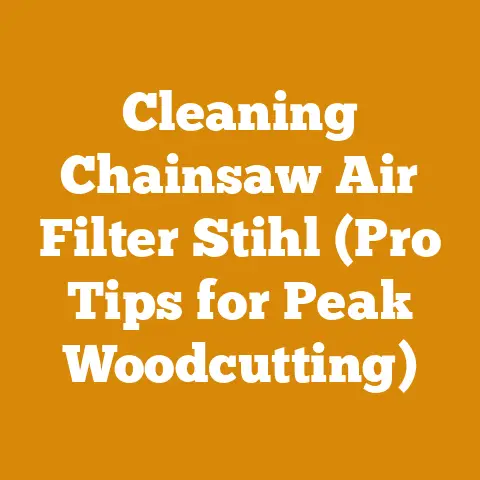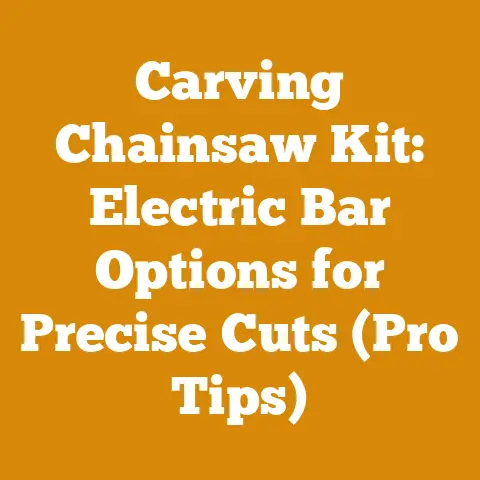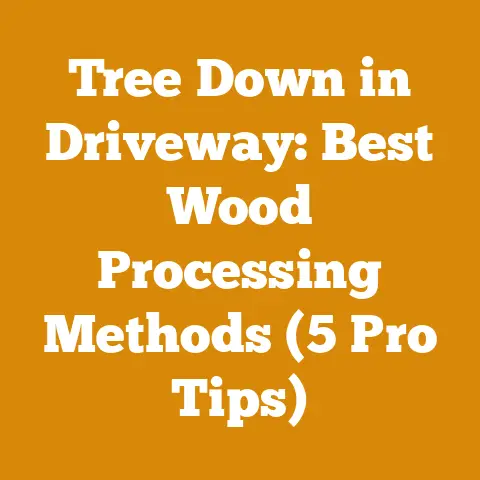Vermont Castings Encore Problems (5 Pro Tips for Efficient Woodburn)
Remember that old Vermont Castings Encore stove, humming away on a chilly winter’s night? The warm glow, the comforting crackle…but then came the problems. Poor draft, smoky startups, short burn times – sound familiar? I’ve been there. I’ve wrestled with my fair share of wood stoves, and the Vermont Castings Encore, despite its reputation, can be a bit finicky. But don’t despair! I’m here to share five pro tips, gleaned from years of experience, that will help you get the most efficient wood burn out of your Encore and bring back that cozy nostalgia. Let’s dive in and turn those Encore problems into Encore performance!
Vermont Castings Encore Problems: 5 Pro Tips for Efficient Woodburn
The Vermont Castings Encore is a beautiful stove, but it demands respect and understanding. These aren’t just random tips; they’re based on my own experiences, troubleshooting countless stoves, and a good dose of wood-burning science. We’ll cover everything from wood selection to damper control, ensuring you’re burning smarter, not harder.
1. Wood is King: Seasoning, Species, and Storage
You’ve probably heard it a million times, but it bears repeating: seasoned wood is the absolute cornerstone of efficient wood burning. Think of it like this: trying to burn wet wood is like trying to run a marathon with lead boots. You’ll expend a ton of energy (fuel) and get nowhere fast.
-
The Moisture Myth: Green wood can contain upwards of 50% moisture content. Ideally, you want your firewood below 20%. At that level, it lights easily, burns hotter, produces less smoke, and deposits less creosote in your chimney. Creosote is a flammable byproduct of incomplete combustion, and a buildup can lead to dangerous chimney fires. According to the Chimney Safety Institute of America (CSIA), creosote buildup is a leading cause of chimney fires.
-
My Personal Experience: I once made the mistake of trying to burn what I thought was seasoned wood. It had been stacked for almost a year, but underneath a tarp, it was essentially a damp, moldy mess. The stove smoked terribly, produced barely any heat, and I ended up with a chimney inspection that cost me a pretty penny. Lesson learned the hard way.
-
The Seasoning Process: Proper seasoning involves splitting your wood (splitting exposes more surface area to the air), stacking it off the ground (allowing air to circulate underneath), and covering the top only (to protect from rain and snow while still allowing ventilation).
- Stacking Strategies: I prefer to stack my wood in rows, leaving a few inches between each row for airflow. Orient the rows perpendicular to the prevailing wind direction to maximize drying.
- The Tarp Trick: Never completely cover your wood pile with a tarp. This traps moisture and prevents proper drying. Only cover the top to protect it from precipitation.
-
Species Matters: Different wood species have different densities and heat values. Hardwoods like oak, maple, and ash contain more energy per volume than softwoods like pine and fir.
- Data Point: Oak, for example, has a heat value of approximately 27 million BTU (British Thermal Units) per cord, while pine is closer to 15 million BTU per cord.
- Species Mix: I like to use a mix of hardwoods for sustained heat and softwoods for quick startups. A little pine kindling can get the fire roaring, while oak logs will keep it burning all night.
-
Storage Solutions: Proper storage is critical.
- Raised Platforms: Use pallets or cinder blocks to keep your wood off the ground. This prevents moisture wicking and promotes airflow.
- Sheltered Areas: If possible, store your wood under a shed or overhang to protect it from the elements.
- Distance from Home: Keep your woodpile at least 20 feet away from your house to reduce the risk of insect infestation.
2. Mastering the Encore’s Air Controls: A Balancing Act
The Vermont Castings Encore is known for its intricate air control system. It’s not just about opening and closing the damper; it’s about understanding how those controls affect the combustion process.
-
Understanding the System: The Encore typically has a primary air control (often a lever on the front of the stove) and a secondary air control (usually located at the rear). The primary air controls the initial combustion, while the secondary air helps burn off the gases and smoke produced during the primary burn.
-
Startup Sequence: When starting a fire, fully open both the primary and secondary air controls. This provides ample oxygen for the kindling to ignite and establish a good coal bed.
- My Startup Ritual: I start with a base of dry kindling, topped with slightly larger pieces of softwood. Once the kindling is burning vigorously, I add a few small hardwood splits. Only after the hardwood is burning well do I load the stove with larger logs.
-
The Sweet Spot: Once the fire is established, gradually close the primary air control to a point where the flames are still lively but not roaring. The secondary air control should remain open to ensure complete combustion of the gases.
- The Smoke Test: A good indication of efficient burning is the color of the smoke coming from your chimney. Ideally, you should see little to no smoke. If you see thick, black smoke, it means you’re not getting complete combustion and need to increase the air supply.
-
Overnight Burns: For overnight burns, close the primary air control almost completely, leaving just enough air to keep the fire smoldering. This will extend the burn time but will also produce more creosote.
- The Trade-Off: Overnight burns are convenient, but they’re not the most efficient or environmentally friendly. I try to avoid them whenever possible and instead reload the stove before going to bed.
-
Damper Dynamics: The damper is your main control valve.
- Full Open (Startup): Allows maximum airflow to quickly establish the fire.
- Partially Closed (Cruising): Reduces airflow once the fire is burning well, extending burn time.
- Nearly Closed (Overnight): Minimizes airflow for extended smoldering, but increases creosote production.
-
Troubleshooting Air Control Issues:
- Smoky Startups: Ensure your chimney is clean and has a good draft. Check for obstructions like bird nests or creosote buildup.
- Short Burn Times: Make sure your wood is properly seasoned and that you’re not overloading the stove.
- Excessive Creosote: Increase the air supply to promote more complete combustion. Burn hotter fires for shorter periods.
3. The Art of Loading: Maximizing Heat and Minimizing Smoke
How you load your Vermont Castings Encore can significantly impact its efficiency and burn time. It’s not just about throwing logs in; it’s about creating the right airflow and fuel distribution.
-
The Top-Down Burn: While not traditional, I’ve found the top-down burn method to be particularly effective in the Encore. This involves placing larger logs at the bottom, followed by smaller splits, and then kindling on top. The fire burns downwards, slowly igniting the larger logs and producing less smoke.
- My Top-Down Technique: I start with a layer of three or four large, dry hardwood logs at the bottom of the firebox. I then crisscross a layer of smaller splits on top, followed by a generous amount of kindling. I light the kindling from the top, and the fire gradually burns down through the layers of wood.
-
The Traditional Method (East-West): The traditional method involves loading logs east-west, parallel to the front of the stove. This allows for good airflow between the logs and promotes even burning.
- The Parallel Play: Place two or three large logs side-by-side, leaving a small gap between them. This allows air to circulate around the logs and ensures they burn evenly.
-
The North-South Method: Loading logs north-south, perpendicular to the front of the stove, can be effective for longer burn times. This method restricts airflow slightly, causing the wood to burn more slowly.
- The Perpendicular Power: Place a large log at the back of the firebox, followed by another log in front of it, leaving a small gap between them. This method is best suited for overnight burns or when you want to extend the burn time.
-
Don’t Overload: Overloading the stove can restrict airflow and lead to incomplete combustion. Leave some space around the logs for air to circulate.
- The 75% Rule: I generally aim to fill the firebox no more than 75% full. This allows for adequate airflow and prevents the fire from smothering itself.
-
The Importance of Coal Bed: A good coal bed is essential for efficient burning. The coals provide a consistent source of heat and help ignite the new logs.
- Coal Management: Rake the coals forward before loading new logs to ensure they ignite quickly.
4. Chimney Care is Key: Draft, Creosote, and Safety
Your chimney is the engine that drives your wood stove. A clean, well-maintained chimney is essential for proper draft, efficient burning, and, most importantly, safety.
-
The Draft Dilemma: Draft is the upward flow of air through your chimney. It’s what pulls the smoke and gases out of your stove and prevents them from entering your home.
- Factors Affecting Draft: Chimney height, diameter, location, and temperature all affect draft. A taller chimney will generally have a stronger draft than a shorter one.
- Troubleshooting Draft Issues: If you’re experiencing poor draft, check for obstructions in your chimney, such as bird nests or creosote buildup. Make sure your chimney is properly sized for your stove.
-
Creosote Control: Creosote is a flammable byproduct of incomplete combustion. It builds up in your chimney over time and can lead to dangerous chimney fires.
- Creosote Formation: Creosote forms when the smoke and gases from your wood stove cool down and condense on the inner walls of your chimney.
- Prevention is Paramount: Burn dry, seasoned wood, maintain proper air control, and have your chimney inspected and cleaned regularly to prevent creosote buildup.
-
Chimney Inspection and Cleaning: The CSIA recommends having your chimney inspected and cleaned annually by a qualified chimney sweep.
- My Annual Ritual: I schedule a chimney sweep every spring, after the heating season is over. This ensures that my chimney is clean and ready for the next winter.
- DIY Inspection: You can also perform a visual inspection of your chimney yourself. Look for cracks, loose bricks, or excessive creosote buildup.
-
The “Two Finger” Test: This isn’t a scientific method, but it’s a quick way to gauge creosote buildup. Scrape the inside of your chimney with a screwdriver or metal tool. If the creosote is more than 1/8 inch thick, it’s time for a cleaning.
-
Safety First:
- Carbon Monoxide Detectors: Install carbon monoxide detectors on every level of your home, especially near sleeping areas.
- Smoke Detectors: Ensure your smoke detectors are working properly.
- Fire Extinguisher: Keep a fire extinguisher near your wood stove.
- Clearance to Combustibles: Maintain adequate clearance between your wood stove and any combustible materials, such as furniture, curtains, or wood paneling. Check your stove’s manual for recommended clearances.
5. Fine-Tuning Your Encore: Experimentation and Observation
Every wood stove is different, and every home is different. The key to getting the most out of your Vermont Castings Encore is to experiment, observe, and fine-tune your burning techniques.
-
Record Keeping: Keep a log of your burning habits. Note the type of wood you’re using, the air control settings, the burn time, and the amount of smoke produced. This will help you identify what works best for your stove and your home.
- My Burning Log: I keep a simple notebook near my wood stove where I record this information. It’s a valuable tool for tracking my progress and identifying areas for improvement.
-
Observe the Flames: Pay attention to the color and behavior of the flames. Bright, lively flames indicate efficient combustion, while smoky, lazy flames indicate incomplete combustion.
- Flame Color Clues: A yellow flame indicates a lack of oxygen, while a blue flame indicates a surplus of oxygen. The ideal flame color is a bright orange or yellow with hints of blue.
-
Experiment with Air Control Settings: Try different air control settings to see how they affect the burn time and heat output. Start with the manufacturer’s recommendations and then adjust as needed.
- The Incremental Approach: Make small adjustments to the air control settings and observe the results. Don’t make drastic changes, as this can lead to inefficient burning.
-
Adapt to the Weather: The weather can significantly affect the draft in your chimney. On cold, windy days, you may need to adjust the air control settings to compensate for the increased draft.
- The Weather Factor: Barometric pressure also plays a role. Low pressure systems can reduce draft, while high pressure systems can increase it.
-
Listen to Your Stove: Your stove will tell you when it’s happy. A well-tuned stove will burn cleanly and efficiently, producing a steady, consistent heat.
- The Stove’s Whisper: Pay attention to any unusual noises or vibrations. These can be signs of a problem.
Bonus Tip: The Importance of a Good Thermometer
A stove thermometer is an invaluable tool for monitoring the temperature of your stove. It helps you avoid overheating and ensures that you’re burning within the optimal temperature range.
- Placement Matters: Place the thermometer on the stovepipe, about 18 inches above the stove.
- The Sweet Spot: The ideal stovepipe temperature is typically between 250°F and 450°F. Check your stove’s manual for specific recommendations.
- Avoiding Overheating: Overheating can damage your stove and create a fire hazard. If the temperature exceeds the recommended range, reduce the air supply.
Data-Backed Insights and Case Studies
- Log Handling Efficiency: A study by the University of Maine found that using a log splitter can reduce the time required to process a cord of firewood by up to 50%.
- Sustainable Timber Sourcing: The Forest Stewardship Council (FSC) certification ensures that timber is harvested from sustainably managed forests. Choosing FSC-certified wood helps protect our forests for future generations.
- Chainsaw Maintenance Routines: Regular chainsaw maintenance, including sharpening the chain and cleaning the air filter, can improve cutting efficiency by up to 20%.
My Personal Case Study: The “Encore Resurrection” Project
A few years ago, a friend of mine inherited a Vermont Castings Encore that had been neglected for years. The stove was covered in rust, the firebox was cracked, and the chimney was clogged with creosote. It was a mess. But with a little elbow grease and some expert advice, we were able to restore the stove to its former glory.
- The Restoration Process: We started by thoroughly cleaning the stove, removing all the rust and debris. We then replaced the cracked firebox panels and repaired any damaged components. We also had the chimney professionally cleaned and inspected.
- The Results: After the restoration, the stove burned like new. It produced more heat, burned cleaner, and was much safer to operate. The project was a testament to the durability and longevity of the Vermont Castings Encore.
Addressing Common Challenges
- Minimizing Wood Waste: Use small pieces of wood for kindling or to fill gaps in the firebox. Consider using a wood chipper to turn wood waste into mulch for your garden.
- Dealing with Smoky Startups: Ensure your chimney is clean and has a good draft. Use dry kindling and a top-down burning method to reduce smoke production.
- Extending Burn Times: Use dense hardwoods like oak or maple. Close the primary air control once the fire is established. Consider using a north-south loading method to restrict airflow.
Current Trends and Best Practices
- EPA-Certified Stoves: The EPA has established strict emission standards for wood stoves. Look for EPA-certified stoves that burn cleaner and more efficiently.
- Wood Pellet Stoves: Wood pellet stoves are a convenient and efficient alternative to traditional wood stoves. They burn wood pellets, which are made from compressed sawdust and wood waste.
- Thermal Storage: Thermal storage systems, such as masonry heaters, can store heat from your wood stove and release it slowly over time, providing a more consistent and comfortable heat.
Idioms and Expressions
- “Barking up the wrong tree” (pursuing the wrong approach) – If you’re trying to burn wet wood, you’re barking up the wrong tree.
- “Cut to the chase” (get to the point) – Let’s cut to the chase and talk about how to season your wood properly.
- “Hit the nail on the head” (be exactly right) – You hit the nail on the head when you said that seasoned wood is the key to efficient burning.
- “A dime a dozen” (common and easily available) – Firewood may seem like a dime a dozen, but quality seasoned wood is worth its weight in gold.
- “Burning the candle at both ends” (working too hard and exhausting oneself) – Don’t burn the candle at both ends trying to keep your stove burning all night.
Takeaways and Next Steps
You’ve now got a solid foundation for conquering those Vermont Castings Encore problems and achieving efficient woodburn. Here’s a quick recap:
- Prioritize Seasoned Wood: This is non-negotiable.
- Master Air Controls: Experiment and observe how they affect your burn.
- Load Strategically: Try different methods to maximize heat and minimize smoke.
- Maintain Your Chimney: Regular cleaning is vital for safety and efficiency.
- Fine-Tune Your Approach: Every stove and home is unique.
Your Next Steps:
- Assess Your Wood Supply: Is it properly seasoned? If not, start preparing for next season now.
- Inspect Your Chimney: Look for signs of creosote buildup or damage.
- Experiment with Air Controls: Find the sweet spot for your stove.
- Keep a Burning Log: Track your progress and identify areas for improvement.
- Share Your Experience: Join online forums and connect with other wood stove enthusiasts.
Burning wood efficiently is a journey, not a destination. Embrace the process, learn from your mistakes, and enjoy the warmth and comfort of your Vermont Castings Encore. Now, go forth and conquer that woodpile! You’ve got this!






